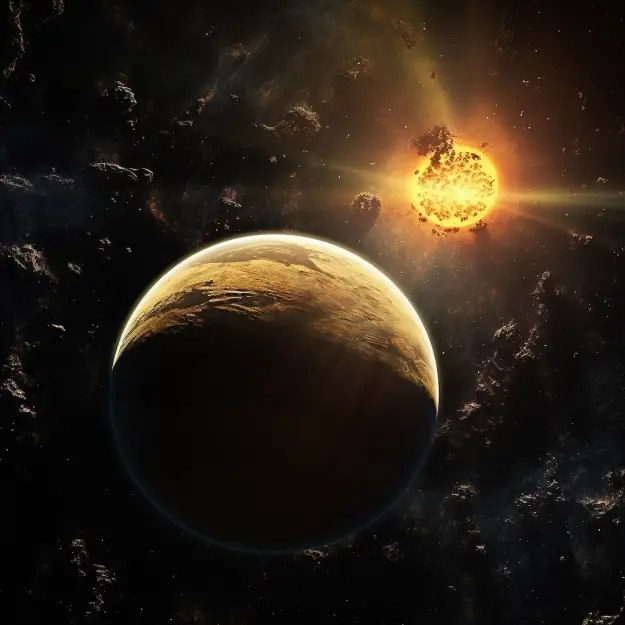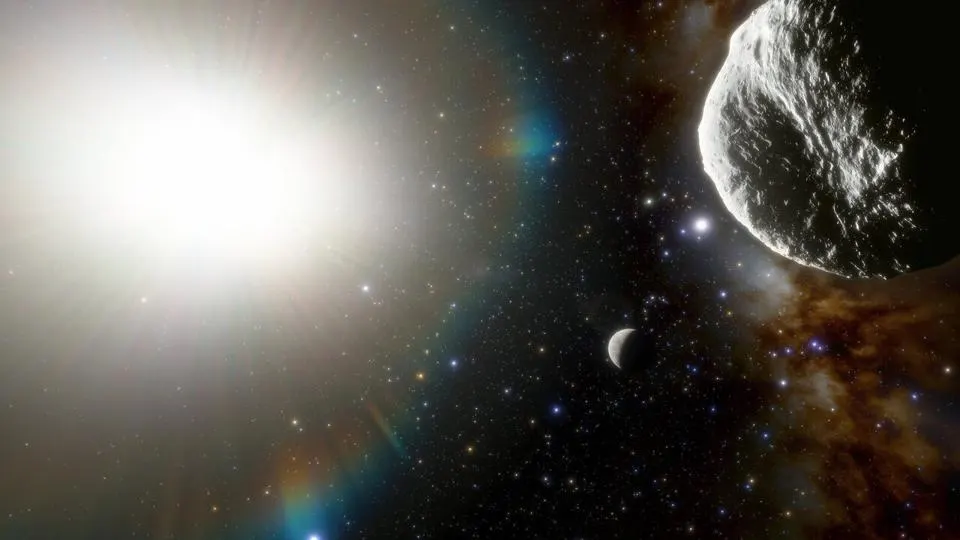Mercury has held the distinction of being the closest planet to the Sun for centuries. However, recent scientific discoveries have dethroned Mercury from its position as the Sun’s closest neighbor.

A new astronomical body, an asteroid named 2021 PH27, has been found to be even closer to the Sun than Mercury.
Table of Contents
This groundbreaking discovery has significant implications for our understanding of the solar system and the dynamic forces at play within it. In this article, we will explore the discovery of this new celestial object and its potential impact on the field of astronomy.
Parallel Worlds Could Finally Explain Weirdness of Quantum Physics
The Discovery of Asteroid 2021 PH27
The discovery of asteroid 2021 PH27 was made by astronomers using the Pan-STARRS telescope in Hawaii. This powerful telescope is designed to scan the sky for objects moving in relation to the background stars, making it an ideal tool for discovering new celestial bodies. The asteroid was first detected on August 13, 2021, and its orbit was subsequently confirmed by additional observations from other telescopes around the world.
Asteroid 2021 PH27’s Unique Orbit
Asteroid 2021 PH27 boasts an incredibly unusual orbit, one that brings it closer to the Sun than any other known astronomical body. Its orbit is highly elliptical, meaning that it moves in an elongated, oval-shaped path around the Sun. At its closest approach, known as perihelion, the asteroid comes within 20 million kilometers (12.4 million miles) of the Sun, closer than Mercury’s average distance of 57.9 million kilometers (35.98 million miles). This proximity to the Sun, coupled with the asteroid’s small size, made it extremely difficult to detect, as its brightness is often overwhelmed by the Sun’s intense glare.

The Composition and Characteristics of Asteroid 2021 PH27
Asteroid 2021 PH27 is estimated to be roughly 1 kilometer (0.62 miles) in diameter, making it a relatively small celestial object. Its composition remains largely unknown, as its proximity to the Sun makes detailed observations challenging. However, scientists believe that it is likely composed of rock and metal, similar to other asteroids found within our solar system. The extreme temperatures experienced by the asteroid as it approaches the Sun could cause the surface to heat up to 900 degrees Celsius (1,652 degrees Fahrenheit), hot enough to melt lead.

Implications for Our Understanding of the Solar System
The discovery of asteroid 2021 PH27 has significant implications for our understanding of the solar system. Its unique orbit suggests that it may have originated from a different region of the solar system, perhaps having been ejected from its original location due to gravitational interactions with other celestial bodies. This could provide new insights into the formation and evolution of the solar system, as well as the dynamic forces that govern the orbits of celestial objects.
Furthermore, the discovery highlights the importance of ongoing sky surveys and the development of advanced telescopes capable of detecting small, faint objects near the Sun. As our ability to detect and observe these objects improves, we may uncover other previously unknown celestial bodies that could further reshape our understanding of the solar system.
Potential Future Exploration of Asteroid 2021 PH27
The discovery of asteroid 2021 PH27 presents an exciting opportunity for future space exploration. Due to its proximity to the Sun, a spacecraft mission to the asteroid would need to be designed to withstand extreme temperatures and radiation levels. However, such a mission could provide valuable information about the asteroid’s composition, as well as its origin and history.
Additionally, studying the asteroid could offer insights into how celestial objects can survive and evolve in such close proximity to the Sun. This knowledge could prove invaluable for future missions to other stars and their respective planetary systems, helping us to better understand the diverse range of celestial bodies that exist within our universe.
The discovery of asteroid 2021 PH27 has dethroned Mercury as the closest astronomical body to the Sun, reshaping our understanding of the solar system and its celestial inhabitants. As we continue to explore the cosmos and uncover new celestial objects, our knowledge of the universe will continue to expand, paving the way for a deeper understanding of the complex forces that govern the cosmos. The study of asteroid 2021 PH27 and other similar objects will undoubtedly contribute to this ongoing quest for knowledge, enhancing our understanding of the universe and our place within it.
Reference(s):

